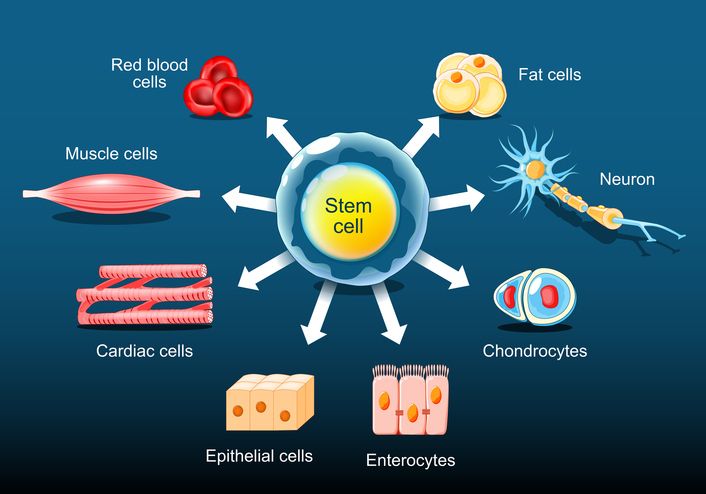
Author: Natalie Ng|Updated: 6 June 2025
You can reset your metabolism and get your body burning fat more efficiently in just one week. It starts with small, steady changes—eating more whole foods, keeping your meals regular, and choosing simple, unprocessed ingredients. Think lean protein, healthy fats, and plenty of fibre from vegetables. Pair that with some light movement, better sleep, and less stress, and your body starts to respond. A metabolic reset diet helps shift the way your body handles calories. Instead of extreme restrictions, it focuses on balance—helping you lose weight without cutting out entire food groups or following overly strict rules. It also supports appetite control, boosts energy, and can reduce those cravings that make weight loss feel harder than it needs to be. If you've been gaining weight, feeling low on energy, or stuck in a slow metabolism loop, this type of reset might be what your body needs. Keep reading to learn how a 7-day metabolic reset diet plan can make a real difference to your energy, metabolism, and overall weight loss journey.

Impact of Metabolism on Weight, Energy, and Fat Loss

Metabolism controls calorie burn and energy use
Your metabolism influences how your body converts food into energy. It affects how many calories you burn daily and plays a direct role in weight gain or fat loss. A higher metabolic rate helps you burn more calories, even while resting. A slower metabolism can lead to storing more body fat and gaining weight over time.
Factors that influence your metabolic rate
Your metabolic rate is shaped by age, muscle mass, hormones, and physical activity. Younger bodies tend to burn more calories because they have more muscle and a faster metabolism. As muscle mass decreases with age, metabolism often slows unless supported by regular exercise and proper nutrition.
Link between slow metabolism and weight gain
A slow metabolism can lead to weight gain when calorie intake stays the same but energy expenditure drops. This is common with lower activity levels, hormonal shifts, or reduced muscle mass. Extra energy from food gets stored as fat, which makes weight loss harder over time.
Habits that support metabolic health
Regular exercise, more protein intake, and enough sleep help keep your metabolism steady. Lean protein helps protect muscle mass, while strength training increases the amount of calories your body burns. Staying hydrated, eating whole foods, and avoiding processed foods also support metabolic health, reduce food cravings, and help with appetite control.
A healthy metabolism supports better energy levels, body weight balance, and fat burning. It also helps reduce food cravings and supports long-term weight loss. Keep reading to learn how a metabolic reset diet plan can help bring your metabolism back into balance.

Key Habits That Support a 7-Day Metabolic Reset

Meal Timing Aligns with Natural Metabolic Rhythms
Eating on a regular schedule helps support metabolic health by syncing with your body’s internal clock. Your metabolism responds well to predictable eating patterns, which improves energy balance and appetite control.
How to structure your meal timing:
• Eat breakfast within one hour of waking to stimulate calorie burn early in the day.
• Space meals 4 to 5 hours apart to support blood sugar balance and reduce food cravings.
• Finish dinner by 7 PM to give your body time to digest before rest.
• Include a 12-hour overnight break between dinner and the next day’s breakfast to support fat metabolism.
Avoid skipping meals, as it can slow your metabolism and lead to a higher caloric intake later in the day. Keeping a food journal helps you track timing, hunger cues, and changes in energy.
Macronutrient Balance Supports Weight Loss Without Restrictions
Balancing your daily intake of carbohydrates, protein, and fats helps your body burn calories more efficiently while supporting muscle maintenance and energy levels.
Target macronutrient ratio:
• 40% carbohydrates
• 30% protein
• 30% healthy fats
This balance supports steady energy and appetite control while helping maintain a caloric deficit for weight loss.
Tips to apply this:
• Start with a protein-rich breakfast to support muscle mass and metabolic rate.
• Fill half your plate with vegetables and whole grains, a quarter with lean protein, and the rest with healthy fats like olive oil, nuts, or avocado.
• Avoid cutting out entire food groups—most metabolic reset diets work best when all macros are included in proper portions.
Book Now to Experience
S6 Body Sculpting Treatment
1 Minute Self-Registration
Date should not be before minimal date

Essential Foods That Support Metabolic Health and Fat Loss

High-Fiber Foods That Increase Calorie Burn
Fiber-rich foods help your body burn more calories by making your digestive system work harder. They also help with appetite control by keeping you full longer, which supports a lower overall caloric intake.
Add these high-fiber metabolism boosters to your diet:
• Lentils and black beans for both fiber and plant-based protein
• Quinoa, oats, and barley for slow-releasing energy and gut health
• Leafy greens like kale and spinach to support digestion and nutrient absorption
• Chia seeds, raspberries, and artichokes for added fiber variety
Aim for 25–35 grams of fiber each day. A fiber-rich breakfast—like steel-cut oats with berries and nuts—can help jumpstart your metabolism and improve energy levels throughout the day.
Lean Protein Helps Build Muscle and Burn Fat
Protein takes more energy to digest than carbs or fat, which increases your overall calorie burn. It also helps preserve muscle mass during a reset diet, which is important for maintaining a higher metabolic rate.
Ideal protein sources to include:
• Wild-caught salmon, skinless chicken breast, and white fish like cod or halibut
• Grass-fed lean beef for iron and B vitamins
• Egg whites, Greek yogurt, and cottage cheese as quick, high-protein meals or snacks
• Plant-based proteins like lentils, chickpeas, and quinoa for added fiber and energy
Try to spread your protein across the day, aiming for 20–30 grams per meal. Include protein at breakfast to support early-day fat burning and appetite control.
Thermogenic Spices That Naturally Raise Metabolic Rate
Some herbs and spices can boost your metabolism by slightly raising your body’s core temperature, which leads to greater energy expenditure and calorie burn throughout the day.
Key thermogenic ingredients to include:
• Cayenne pepper (capsaicin boosts calorie burn and helps reduce appetite)
• Ginger (supports blood sugar balance and raises metabolic rate)
• Cinnamon (helps improve insulin sensitivity after meals)
• Turmeric (curcumin supports fat metabolism and reduces inflammation)
Add these to smoothies, teas, soups, or cooked meals to make them more metabolism-friendly without needing drastic changes to your food groups or portion sizes.

Sample Meal Ideas for a 7-Day Metabolic Reset Diet Plan

Whole Foods Help Support Metabolic Reset Goals
During your 7-day metabolic reset diet plan, focus on eating nutrient-dense foods that fuel your metabolism without adding processed ingredients, excess sugar, or unhealthy fats. The goal is to support fat loss, energy levels, and appetite control while keeping your metabolic rate stable.
Key foods to focus on throughout the week:
• Lean protein (chicken breast, turkey, fish, eggs, Greek yogurt)
• Colorful vegetables (broccoli, spinach, bell peppers, zucchini)
• Healthy fats (avocados, nuts, seeds, extra virgin olive oil)
• Whole grains (brown rice, quinoa, oats)
• Hydrating fluids (water, green tea, herbal infusions)
Avoid processed foods, refined carbs, and sugary snacks, as they can disrupt your body’s natural fat-burning process and trigger cravings.
Daily Meal Ideas to Support Fat Burning and Energy
Each day of your reset plan should follow the same general structure: three balanced meals and two light snacks. This supports stable energy, reduced hunger, and a natural calorie deficit.
Sample meal structure:
• Breakfast:
- Spinach and egg scramble with a slice of whole grain toast
- Greek yogurt with chia seeds and berries
• Lunch:
- Grilled chicken salad with avocado and olive oil dressing
- Wild-caught salmon with roasted vegetables and quinoa
• Dinner:
- Turkey and brown rice bowl with broccoli and tahini
- Grass-fed beef stir-fry with bok choy and carrots
• Snacks (between meals, as needed):
- Raw almonds or walnuts
- Celery sticks with almond butter
- Cucumber slices with hummus
Drink plenty of water throughout the day. If desired, add green tea or herbal teas that contain natural metabolism-boosting compounds. Adjust portions based on your body weight, muscle mass, and daily physical activity.
Book Now to Experience
S6 Body Sculpting Treatment
1 Minute Self-Registration
Date should not be before minimal date

Strategic Meal Timing During Your Metabolism Reset Diet

Meal Timing Supports Fat Burning and Appetite Control
When you eat is just as important as what you eat. Proper meal timing helps regulate blood sugar, manage hunger, and improve how your body burns calories. A structured eating window during your metabolic reset diet can support energy balance and make it easier to stay in a caloric deficit without feeling deprived.
Guidelines to support fat loss through meal timing:
• Eat breakfast within 1 hour of waking
Kickstarts metabolism early and helps avoid mid-morning energy dips or cravings.
• Space meals every 3 to 4 hours
Keeps blood sugar steady and helps prevent insulin spikes that can lead to fat storage.
• Finish your last meal at least 3 hours before bedtime
Supports digestion and allows your body to focus on repair, not storing excess calories overnight.
• Time your protein intake around physical activity
Aim for 20–30 grams of protein within 30 minutes after a workout to help muscle recovery and maintain metabolic rate.
Hydration Supports Meal Timing and Metabolic Flexibility
Drinking enough water throughout the day helps regulate appetite, supports digestion, and contributes to calorie burning. Staying hydrated between meals also helps reduce unnecessary food cravings and supports energy levels.
Easy hydration habits:
• Drink a full glass of water before each meal
• Carry a refillable bottle and sip throughout the day
• Include green tea or herbal infusions for added metabolic benefits
This timing strategy improves your body’s ability to shift between using carbs and fat for energy—also known as metabolic flexibility—which is essential for long-term weight management and fat loss.

Exercise Plan to Support Your 7-Day Metabolic Reset Diet

Daily Movement Increases Metabolic Rate Without Stress
Physical activity helps increase energy expenditure, improve blood flow, and support fat loss. During your metabolism reset diet, the goal is to move regularly without overtraining. Starting your day with low-impact activity can gently raise your heart rate and improve your body's ability to burn calories.
Low-impact morning exercises to activate metabolism:
• 10 minutes of full-body stretching to improve circulation and muscle activation
• 15–20 minute walk outdoors to support energy levels and mental clarity
• Basic yoga poses like downward dog, cat-cow, and child’s pose to reduce stiffness
• Mobility movements such as arm circles, leg swings, or hip rolls to prepare joints for the day
These gentle routines reduce physical stress while supporting your body’s natural fat-burning processes.
Strength Training Supports Muscle and Fat Loss Balance
Building or preserving muscle mass is essential during any metabolism reset plan. Muscle tissue burns more calories than fat—even at rest—so maintaining it supports a higher metabolic rate and better long-term weight control.
Strength training guidelines during your reset:
• Train 2–4 times during the week using short, focused sessions
• Use bodyweight movements like push-ups, squats, lunges, and planks
• Add resistance using bands or light weights as you progress
• Target all major muscle groups: legs, back, chest, core, and shoulders
• Keep workouts to 30–45 minutes and rest 60–90 seconds between sets to keep your heart rate elevated
This balanced approach improves calorie burn, supports muscle growth, and keeps your metabolism elevated after workouts.
Active Recovery Keeps Your Body Moving Without Burnout
Recovery days allow your muscles to repair and your nervous system to reset. Light, low-intensity movement still supports calorie burn and helps you stay in an active routine without overtraining.
Active recovery options:
• 30–45 minute slow walk to encourage circulation and fat burning
• Stretching or light yoga to ease tension and improve flexibility
• Gentle swimming or cycling to engage muscles without added impact
• Mobility drills such as ankle rolls, arm swings, or torso twists to keep joints fluid
Recovery is part of the process—not a break from it. It protects against injury, prevents energy crashes, and keeps your metabolism steady.
Book Now to Experience
S6 Body Sculpting Treatment
1 Minute Self-Registration
Date should not be before minimal date

Sleep and Stress Habits That Support Metabolic Reset

Quality Sleep Supports Hormones and Fat Burning
High quality sleep plays a critical role in maintaining metabolic health. While you sleep, your body balances hormones, repairs tissues, and resets metabolic functions. Poor sleep increases cortisol, a hormone that can lead to weight gain, higher appetite, and slower calorie burn.
Sleep habits that improve metabolic reset results:
• Stick to a fixed bedtime and wake time
Helps regulate your circadian rhythm and improve energy balance.
• Avoid screens for at least 2 hours before bed
Reduces exposure to blue light, which disrupts melatonin production.
• Create a relaxing bedtime routine
Gentle stretching, reading, or warm showers can help prepare your body for rest.
• Keep your bedroom cool, quiet, and dark
Supports deeper sleep cycles and more efficient recovery.
Getting 7–8 hours of sleep each night helps support your metabolism, reduce food cravings, and improve your overall results on the metabolic reset diet.
Stress Affects Appetite, Hormones, and Caloric Intake
Stress impacts your body’s ability to regulate appetite, energy storage, and food choices. Elevated cortisol can increase food cravings, disrupt blood sugar, and lead to overeating—especially of processed foods high in calories and sugar.
Simple techniques to manage stress:
• Deep breathing exercises for 5–10 minutes daily
Helps reduce cortisol and lower heart rate.
• Short walks outdoors
Light physical activity and fresh air can help calm your nervous system.
• Journaling or brain-dumping thoughts
Clears mental clutter and supports emotional balance.
• Guided meditation or quiet sitting
Even 5-minute sessions can help reduce stress-related eating triggers.
Managing stress is not just about feeling better—it directly affects your metabolism, appetite control, and your ability to lose weight and maintain energy.

Common Challenges During a Metabolic Reset and How to Manage Them

Social Situations Can Disrupt Your Meal Plan
Eating out or attending social events often makes it harder to follow a metabolic reset diet. Food choices may be limited, portion sizes may be too large, and meal timing can be inconsistent.
How to stay on track:
• Check the menu ahead of time to choose meals with lean protein, vegetables, and healthy fats
• Eat a small protein-rich snack before going out to avoid overeating
• Request simple modifications like no added sauces, dressing on the side, or grilled instead of fried
• Politely decline extras like bread baskets or sugar-heavy drinks
Planning ahead helps you keep your calorie intake under control while sticking to your reset goals.
Plateaus Can Slow Progress Even With Effort
After a few days on a metabolism reset plan, your body may adjust to the changes and temporarily stop losing weight. This is a natural response and doesn’t mean the plan isn’t working.
Simple ways to break through a plateau:
• Slightly increase your calorie intake for one day to shake up energy balance
• Change your exercise routine by adjusting intensity or trying a new type of movement
• Tighten up meal timing to make sure you’re not snacking too close to bedtime
• Review your macronutrient balance and make sure you’re still including enough lean protein
These small adjustments help restore fat-burning momentum without needing drastic changes.
Emotional Eating Can Affect Calorie Control
Cravings driven by emotions—like stress, boredom, or frustration—can lead to increased caloric intake and disrupt your reset progress.
Alternatives to emotional eating:
• Pause and rate your hunger on a scale of 1 to 10 before eating
• Replace the habit with something productive like journaling, walking, or calling a friend
• Create a “non-food toolkit” with healthy distractions like puzzles, books, or calming music
• Keep tempting foods out of reach to reduce impulse snacking
By identifying emotional triggers early, you can avoid falling back into habits that slow your progress.
Time Pressure Can Affect Meal Planning and Prep
Busy days make it harder to follow structured meals or prepare healthy food options. Skipping meals or grabbing processed foods can lead to a spike in calories and poor energy levels.
Time-saving meal prep strategies:
• Batch cook lean proteins and whole grains on weekends to use through the week
• Use a slow cooker or air fryer for hands-off cooking
• Prepare snacks in advance like pre-cut vegetables, boiled eggs, or homemade trail mix
• Plan simple meals with just a few ingredients to avoid decision fatigue
Staying prepared helps you stick to your metabolism reset diet plan even on busy days.
Book Now to Experience
S6 Body Sculpting Treatment
1 Minute Self-Registration
Date should not be before minimal date

Daily Habits That Help Maintain Metabolic Reset Results

Eating Patterns That Support Long-Term Weight Management
After completing your 7-day metabolic reset diet plan, continuing with structured eating habits will help maintain fat loss, reduce food cravings, and support stable energy levels.
Key eating habits to maintain:
• Continue eating whole, unprocessed foods to avoid added sugars and unhealthy fats
• Keep regular meal timing to support hormonal balance and appetite control
• Don’t skip breakfast, as it helps activate your metabolism early in the day
• Plan meals weekly to reduce impulsive choices and support calorie control
• Prepare ingredients ahead of time to make healthy eating more convenient
These habits help you stay on track with your weight management goals without falling back into old patterns.
Hydration and Sleep Help Prevent Weight Regain
Both hydration and sleep continue to play important roles in metabolic health and appetite control. Poor sleep and dehydration can lead to food cravings, low energy, and weight gain over time.
Simple routines to support metabolic health:
• Drink water before each meal to support fullness and reduce unnecessary caloric intake
• Carry a refillable water bottle to encourage hydration throughout the day
• Aim for 7–8 hours of sleep each night to help regulate hunger hormones and support fat loss
• Keep a calm sleep environment to encourage deeper rest and better recovery
Prioritizing water and high-quality sleep helps you protect the results you've already earned.
Exercise Keeps Your Metabolism Steady
Daily movement helps maintain your current weight, preserve muscle mass, and support long-term fat loss. Keeping a simple fitness routine makes it easier to stay active without needing a major time commitment.
Long-term movement habits:
• Aim for 30 minutes of physical activity daily combining both strength and cardio
• Alternate between walking, cycling, resistance training, and stretching to stay engaged
• Track workouts using a notebook or fitness app to stay consistent and motivated
• Adjust your routine based on your energy levels and goals without skipping movement completely
Exercise remains a key part of sustaining metabolic reset results and improving overall health.
Tracking Progress Helps You Stay Focused
Monitoring how different foods, habits, and routines affect your energy and weight makes it easier to notice changes before they become setbacks.
How to track effectively:
• Use a food and mood journal to connect meals with energy or cravings
• Log workouts and rest days to balance movement with recovery
• Track weight or measurements monthly rather than obsessing over daily fluctuations
• Use reset principles for 2–3 days if you notice early signs of weight gain or low energy
These strategies help you catch small changes early and maintain the results from your metabolism reset diet without needing to start over.

Boost Your Metabolic Reset Results with S6 Body Sculpting Treatment
Even with a structured metabolic reset diet plan and regular physical activity, certain areas of the body can hold on to fat more stubbornly than others. These problem spots—like the belly, thighs, back, and upper arms—often remain resistant, even as overall weight drops and calorie intake decreases. This is where targeted, non-invasive treatments like S6 Body Sculpting can support your progress and help enhance visible results.
How S6 Body Sculpting Works
The S6 Body Sculpting Treatment uses low-energy bio-laser technology to reach subcutaneous fat layers in specific body parts. This laser energy helps break down fat cells by triggering the release of fatty acids, which are then cleared naturally through lymphatic drainage. A vacuum suction system is used during the treatment to gently massage the area and support metabolic activity, helping the body eliminate fat more efficiently.
In addition to fat reduction, the treatment stimulates collagen production to firm the skin. This helps prevent sagging and keeps treated areas smooth and toned—even as fat cells shrink.
Advantages of S6 Body Sculpting During a Reset Diet
Pairing S6 Body Sculpting with your metabolism reset diet can amplify fat-burning results, especially in areas where fat loss tends to stall. Here’s how the treatment supports your overall reset:
• Targets stubborn body fat that often remains after diet and exercise
• Speeds up local metabolic rate, helping to burn more calories in treated zones
• Enhances lymphatic drainage for quicker fat removal
• Firms skin by boosting collagen, reducing the chance of sagging after fat loss
• Requires no surgery or downtime, so you can return to your daily routine immediately
• Complements your weight loss journey by focusing on sculpting and shaping, not just the number on the scale
Whether you're managing your calorie intake, improving metabolic health, or trying to maintain a healthy body weight, this treatment supports your goals without invasive procedures or restrictive diets.
Book Your Consultation Today
If you're following a metabolic reset diet plan and want to target difficult fat areas with a safe, effective, and non-invasive method, S6 Body Sculpting is a smart next step. It fits seamlessly into your weight loss journey and supports visible changes where you need them most.
Book S6 today and give your metabolism reset the extra support it deserves.
New Beauty's S6 Body Sculpting TreatmentBook Now to Experience
S6 Body Sculpting Treatment
1 Minute Self-Registration
Date should not be before minimal date
FAQ
1. Can I do a metabolic reset diet plan without tracking calories?
Yes, you can follow a metabolism reset diet without strict calorie tracking, but it helps to be mindful of portion sizes and the types of foods you eat. The focus is on eating whole foods, balancing macronutrients, and following regular meal timing. That naturally creates a caloric deficit for fat loss without needing to count every calorie. However, if you’re not seeing progress, a short period of calorie tracking can help identify if your intake is too high or too low.
2. Does the metabolic reset diet help improve hormonal balance?
The metabolic reset diet can support hormonal health by stabilizing blood sugar levels and promoting better sleep and stress regulation—both of which influence hormones like insulin and cortisol. By reducing processed foods, eating more lean protein, and spacing meals properly, this approach helps regulate appetite and fat storage hormones, which may support weight management and fat loss.
3. Is it safe to do a metabolic reset plan while using fat loss treatments like S6 Body Sculpting?
Yes, combining a metabolism reset diet with non-invasive treatments like S6 Body Sculpting is generally safe for healthy individuals. In fact, the two approaches work well together. The diet addresses systemic fat metabolism and energy balance, while the treatment targets local fat deposits that are harder to reduce through food and exercise alone. Always consult a licensed professional before combining any treatment with a new diet plan.
4. How long should I follow a metabolic reset diet before seeing results?
Many people notice changes in appetite control, energy levels, and digestion within the first 7 days. Visible fat loss or changes in body weight may take longer, depending on your starting point, activity level, and metabolic rate. A metabolism reset diet is often used as a jumpstart to longer-term weight loss, rather than a permanent solution, and should be followed by a sustainable eating plan for continued progress.
5. What are some common mistakes people make on a metabolism reset diet?
A few common mistakes include not eating enough protein, skipping meals, relying on low-calorie processed snacks, or expecting instant results. Other people may try to restrict certain food groups completely, which can slow metabolism and lead to cravings. To get the best results, it's important to follow a realistic reset plan that focuses on whole foods, steady energy intake, and balanced meals that support long-term metabolic health.
Recommended Articles
COPYRIGHT© NEW BEAUTY MANAGEMENT LIMITED 2025. ALL RIGHT RESERVED.




